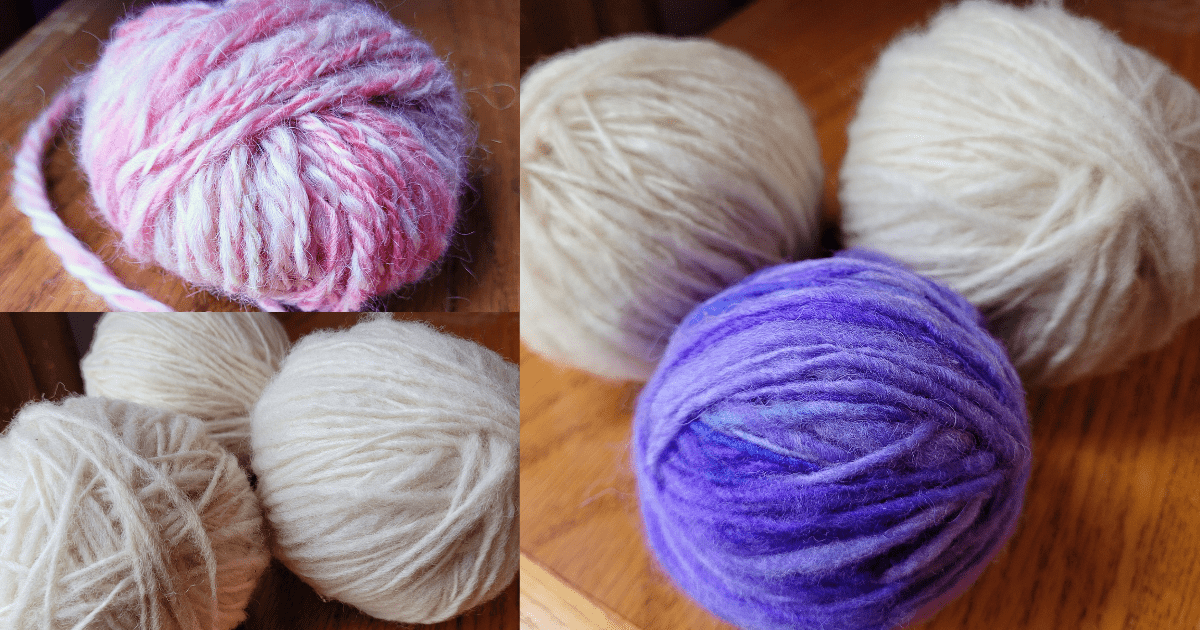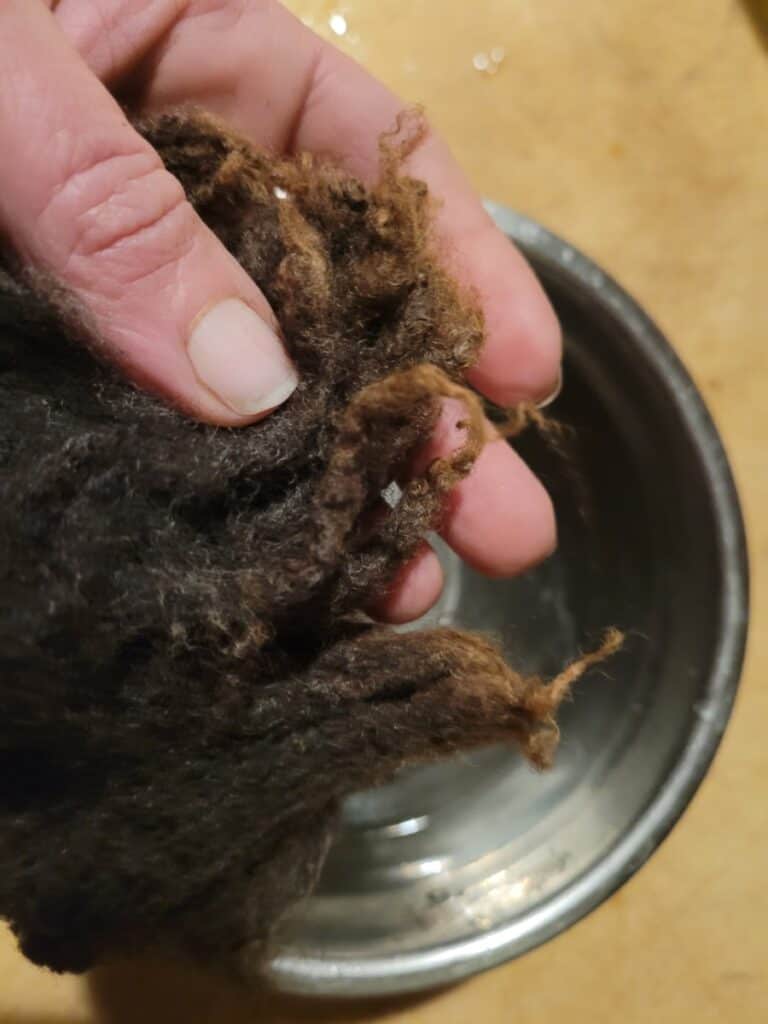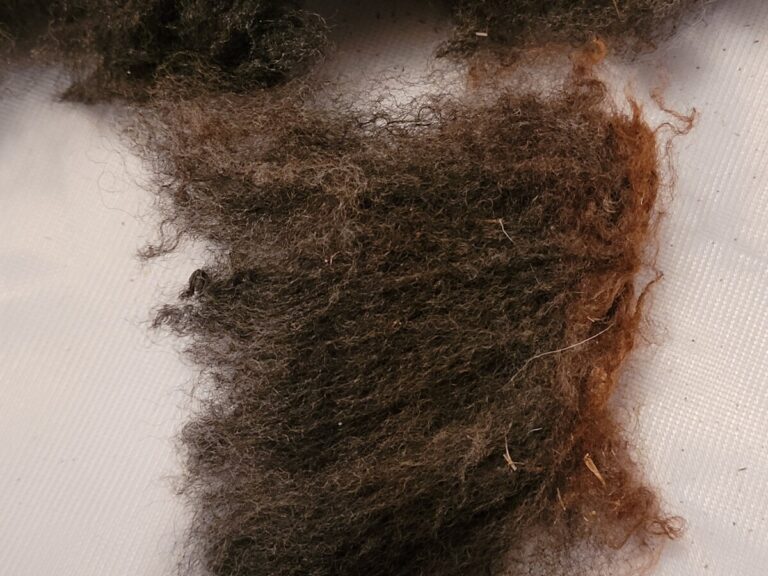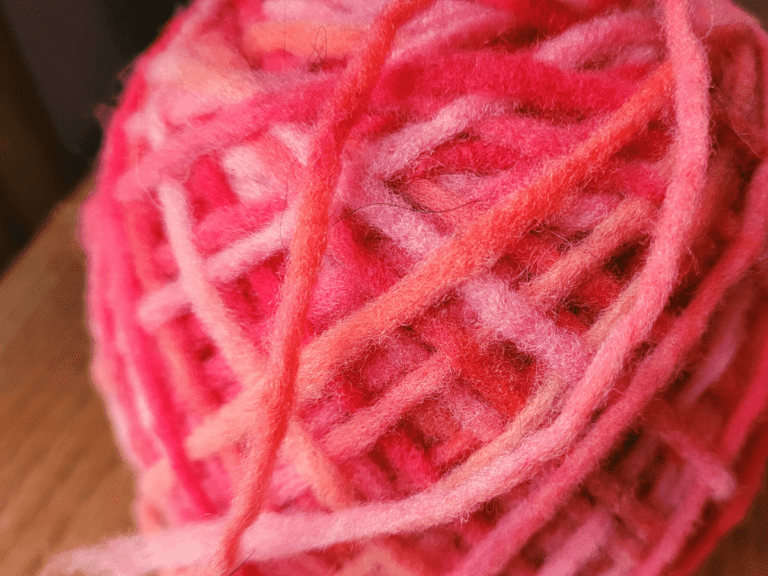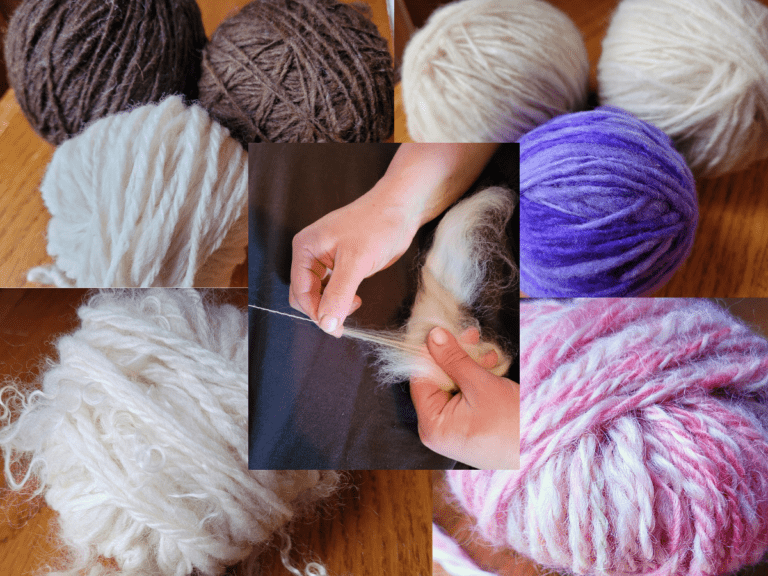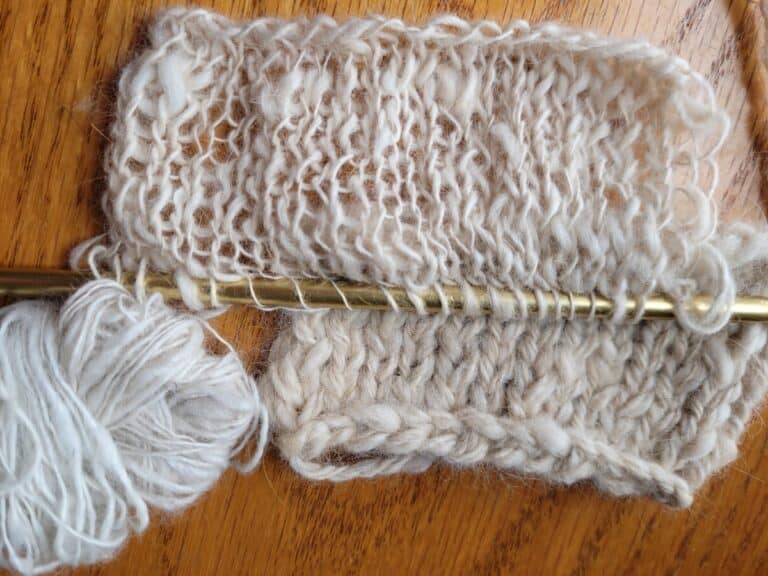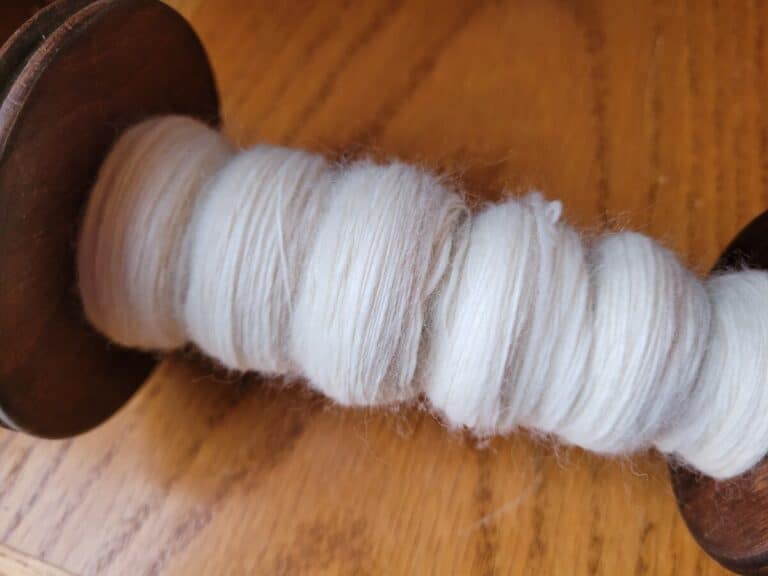What Are The Basic Skills You Need To Learn To Spin Wool?
Thinking about getting started with handspinning wool? You’ll need a few basic skills to make your handspinnning experience productive and enjoyable!
To spin wool you need to have an easy to use wool, a way to spin (wheel or spindle) and the ability to draft (pull fibers) and add twist (treadling for spinning wheels and spinning for spindles), at the same time.
Want a step by step course to get you spinning? Check out Woolmaven Handspinning’s Beginning Spinner Course-it will take you from total beginner to confident spinner!
Does Spinning Your Own Yarn Save You Money? shows you how to figure up the costs of spinning versus buying wool yarns.
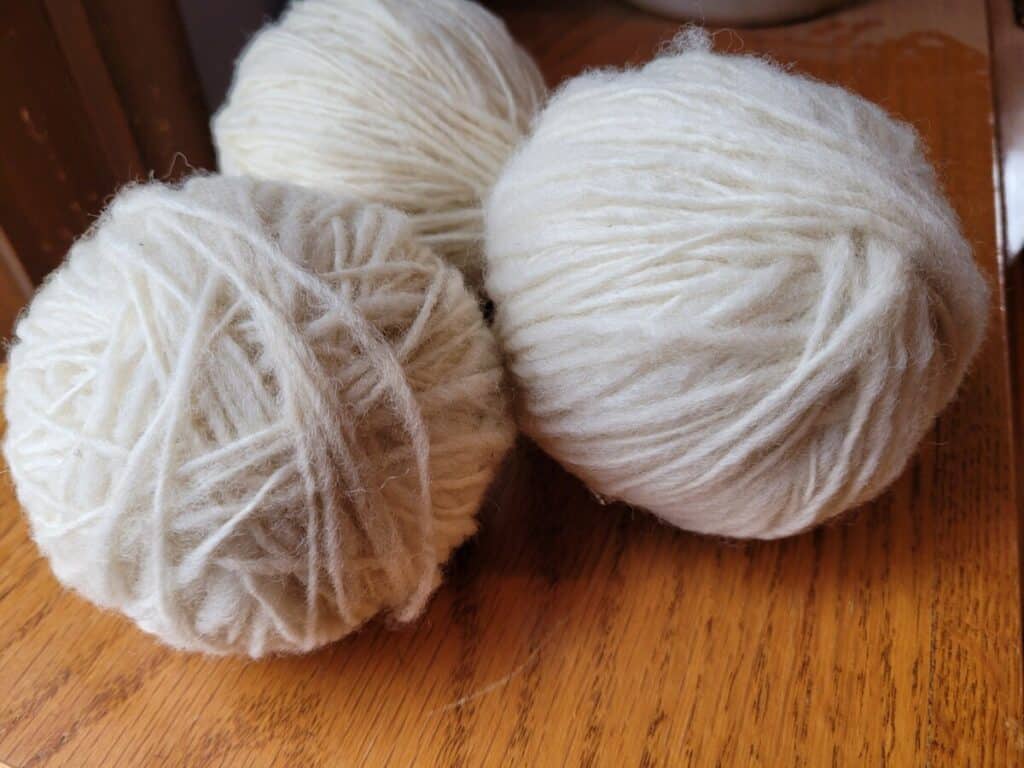
This post contains affiliate links, which means I receive commissions if you choose to purchase through links I provide (at no extra cost to you).
Fiber selection for spinning wool
The first thing to do is to select the best wool for handspinning.
Start with Corriedale
The best wool for you is Corriedale.
Why Corriedale? As a total beginner, you want a very forgiving and super easy to work with wool, nothing beats Corriedale when you are looking for easy to work with.
Can You Handspin Combed Top? gives you tips on how and why to use combed top for your spinning projects.
When you get a bit more experience, the best wool to use is normally one of a few that meet the criteria you have set up based on what characteristics you want your yarn to have.
Since the main characteristic that you want your yarn to have is that is it easy to make for a rank beginner, look no further than Corriedale.
If you are using a spindle, use Blue Faced Leicester, instead.
Use prepared fiber like combed top
You want to get professionally prepared fiber, meaning fiber that has been run through a fiber mill.
Wool prepared by a mill will be super smooth, consistent and wonderful to work with.
You may see a few choices as to what type of wool preparation to get, choose combed top.
Combed top should be easy to find, it’s the most popular wool preparation that I see for sale for handspinning fiber.
Sometimes the word roving is used to describe any prepared fiber, but roving is actually a different than top.
You want combed top, so read the description to make sure you are getting combed top, specifically.
There are other easy to spin wools available, but, in my experience, nothing is easier to work with than Corriedale combed top.
Corriedale is loved by new and experienced spinners, alike, give it a try!
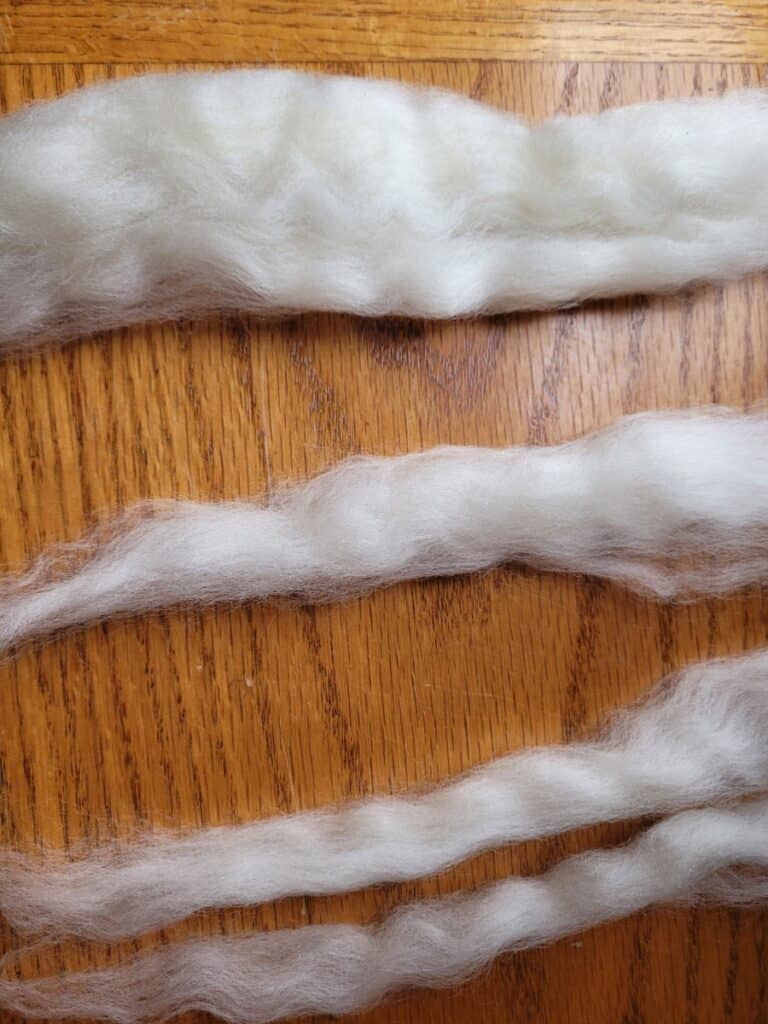
Getting fiber ready to spin
Now that you have your fiber (Corriedale combed top, remember?), you’ll need to do a small amount of work, just to give you less wool to work with at a time, which makes it easier on you!
You’ll want to take your combed top and pull out a 1-1.5 foot section and separate it from the rest of the wool. Place you hands about 6-8 inches apart and pull, which will pull off a section of top.
You’ll notice that the top is pretty substantial, so you’ll need to split it into columns to make it easy to work with.
I normally split my wool into at least 4 strips, up to 8 if I need to. You’ll have to experiment!
The idea is that you are splitting off smaller sections of top so that you have to draft (pull the fibers as you spin) less.
Never fear, you can’t really split the top too much.
If you think the splits (called sliver, pronounced sly-ver) are too small, you can just stack two together to use as you are spinning. Chances are you won’t need to.
The other thing that you’ll want to have ready is an easy to reach spot for your extra sliver to set.
You can put it all in your lap, but I find this to be confusing and messy, so I set it to the side on a low table.
Getting wheel ready to spin
While you could be using a spindle to make your yarn, I’m figuring that you are using a wheel, so we’ll go over what you need to consider to make sure your wheel is set up correctly.
First, make sure that you have a bobbin on the wheel. This is where the spun wool will go to after it passes through your hands.
Now, set your wheel tension. This will be some sort of knob that you can turn, what exactly it looks like depends upon your wheel.
Pick a middle ground setting, you are really just guessing at this point, or better yet have someone who knows how to spin set this for you.
I find that getting the tension right, or close to right is the hardest part of learning to spin for a beginner.
Know that very small adjustments in your tension can equal noticeable results, so make small changes and see what you have. This will take some fiddling.
Now, take the leader (length of yarn that came attached to the bobbin) from your bobbin, through the hooks on the side of the flyer (the U shaped pieced) and out through the orifice.
Depending upon your wheel, you may need a tool to stick through the orifice and grab the leader. For my wheel, a Louet, the orifice is big enough to just stick the leader through without a grabbing tool or hook.
Pull the leader as far through the orifice as you can, now treadle or turn the wheel clockwise and see how much the leader gets pulled up onto the bobbin. This is your tension in action.
You want the leader to be gently pulled onto the wheel, sitting there doing nothing means you need to turn up the tension, ripping right out of your hands means you need to reduce the tension.
If your leader is too short, tie some yarn or string to it and test the tension. Get the tension where you think it will work and then take off your extra yarn or string.
How To Get Started With Spinning is an article from The Woolery that has quite a few tutorial videos and goes over basic equipment.
Drafting the fiber when you spin
Drafting your fiber is when you pull the wool out more thinly as you are spinning to allow less wool into the wheel at a time. You will be drafting at the same time you are treadling, when you start to spin.
To give you an idea of how much you will need to draft, take a sliver of top (the ones you split off earlier) and give it a few twists, to see how thick of a yarn it would make if you did not draft, at all.
Chances are, you have twisted up a really chubby and dense yarn. If you do not draft your fiber, at all, this is the thickness of yarn you will spin.
If you like this yarn, go with it, if you want thinner yarn, you’ll need to draft the fiber.
To draft, take the end of the wool sliver and pull slightly. Do you see how it thins out the wool in the section you pulled? Now twist up that drafted section, you should see a significantly thinner yarn.
This is all that you are doing when you draft, just pulling the fiber into a thinner cloud so the yarn you make will also be thinner. Drafting is super basic, you’ve got this!
If it is taking you a ton of drafting to get a twisted section that you like, split the fiber again, you probably still have too much in your hands.
Looking for a bit more help? Consider my Beginning Spinner Course. It’s a video course that shows you exactly what to do, in simple steps.
Treadling as you spin
The final thing you’ll need to work out is treadling. The best way to learn to treadle is to just sit down in front of your wheel and try it. Just treadling, no hand work at this time, only feet work!
Try starting and stopping the wheel. Learn to go both clockwise (normal spinning direction) and counterclockwise (normal plying direction). Learn to go slow and steady, really slow!
For me, when I have trouble with treadling, I am always going too fast, always! Practice going slow and stopping.
I stop frequently when I’m spinning and I find it to be an overlooked part of spinning.
It sounds a bit too obvious, but when something starts to go a little wonky, for some reason we don’t think of the easy answer, stop treadling!
We are focused on making yarn, meaning going, but often stopping is needed to sort yourself out and stop things that are a bit off from going completely to disasterville. Learn to stop the wheel 🙂
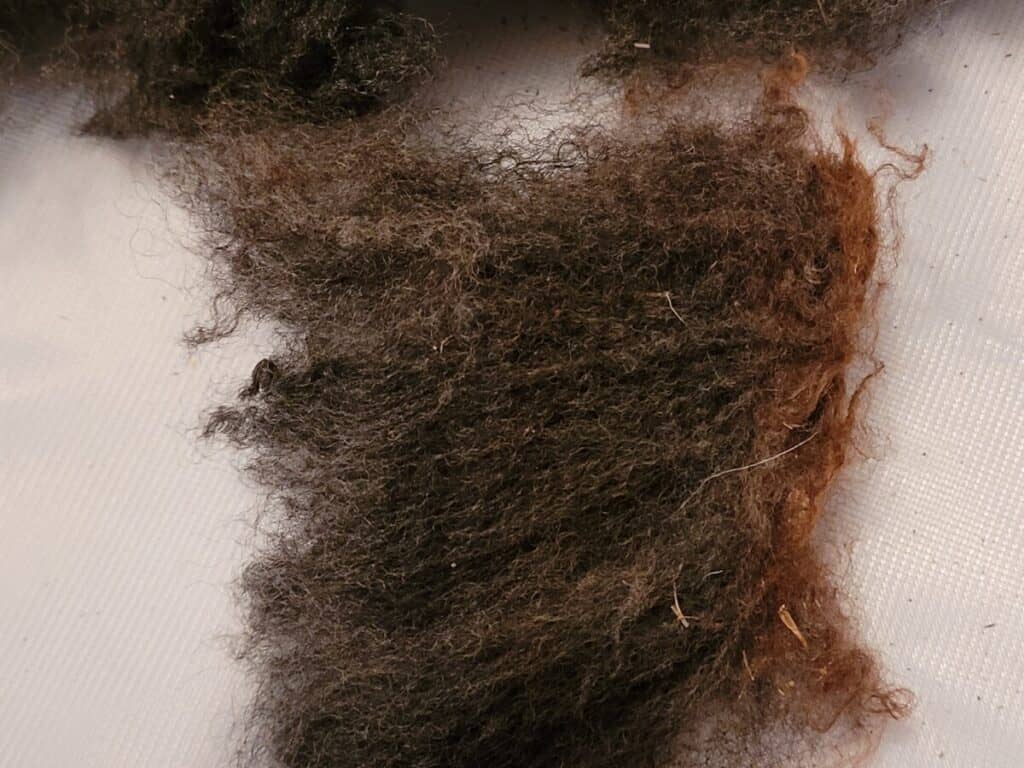
If using raw wool, you will need to prepare it
If you have decided to work with raw (also called unwashed) wool, you will need to do at least a minimal amount of preparation for the fleece to be spinnable.
You may need to card or comb it, in which case you’ll also want to wash it, flick card it, or use it straight off the sheep.
What you do depends on the wool you are working with and how you like your spinning fiber to be prepared.
The hand cards that I use are Clemes & Clemes Curved Back Wool Cards. I’ve had them for almost 20 years and use them for all of my hand carding.
Some folks like spinning raw wool, others do not. Some fleeces lend themselves to spinning raw, others are best washed before spinning. You’ll need to try a small section of the fleece and see.
You should know that working with a raw fleece is a more challenging place to start, for a beginner, than working with prepared fiber, like the Corriedale combed top, mentioned above.
Patience, needed the whole time!
The final thing that you will need is patience, both as a beginner and as you get more experience!
I find that I still get frustrated with a new wool that is not what I expected, meaning I need to keep trying and adjusting until I can make it work for me.
For example, I just finished up some Gotland. I have never worked with it before and had a heck of a time keeping it from slipping right through my hands!
It was very frustrating, especially since I was so excited to try it! If you are not familiar with Gotland wool, it’s a lovely silky grey. I finally order some and I have a time getting it to hold together, yikes!
The good news here, and where this story relates to patience, is that I kept after it.
A few tries later I started to get the feel of working with this beautiful wool and the crazy thing is, I’m not sure what changed, it just finally clicked for me. You’ll have this happen, as well.
Have patience and give yourself some grace, you’ll catch on and then learn to love handspinning, too!
Check out my spinning course at Woolmaven Handspinning!

